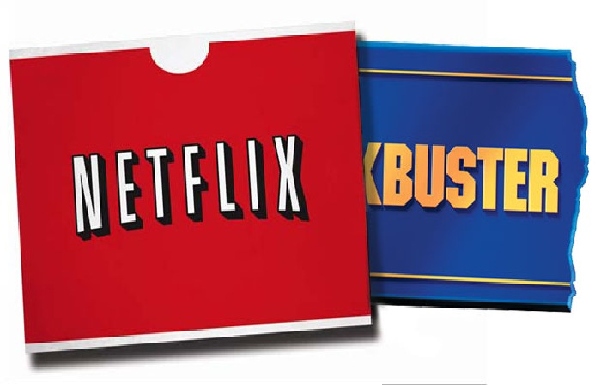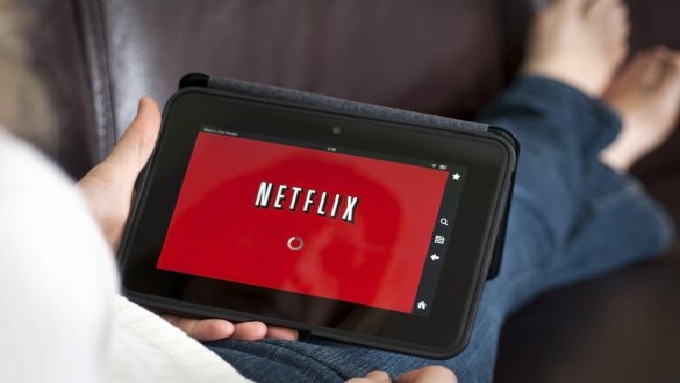Table of Contents
Introduction
Blockbuster Netflix once a household name and a symbol of movie rentals, succumbed to digital disruption, In the ever-evolving entertainment industry landscape, few stories capture the seismic shifts and transformative power of technology as vividly as the rise and fall of Blockbuster and the subsequent ascent of Netflix.
While Netflix emerged as a dominant force in the streaming era. This article will delve into the origins of both companies, analyze the factors that led to Blockbuster’s downfall, and explore how Netflix disrupted the traditional video rental model, ultimately revolutionizing how we consume content.
Blockbuster: The Reign of the Video Rental Empire

Blockbuster was founded in 1985 by computer software entrepreneur David Cook and quickly became synonymous with movie rentals. With its blue-and-yellow storefronts, a vast selection of films, and the convenience of physical rentals, Blockbuster became the leading video rental chain in the United States. By the 1990s, it expanded globally, establishing a dominant presence in several countries. The company’s success hinged on securing exclusive deals with movie studios, ensuring a steady supply of new releases, and leveraging its market power.
The Perfect Storm: Challenges Faced by Blockbuster
Despite its formidable position, Blockbuster faced a perfect storm of challenges that exposed its vulnerabilities. The emergence of online DVD rental services, such as Netflix, directly threatened Blockbuster’s brick-and-mortar model. Netflix, originated in 1997 by Reed Hastings and Marc Randolph, introduced a subscription-based service that allowed customers to rent DVDs by mail, eliminating the need to visit physical stores. Additionally, technological advancements, including high-speed internet and the proliferation of broadband, made online streaming a viable alternative to physical rentals.
Blockbuster’s initial response to these challenges was slow and inadequate. The company underestimated the potential of online rentals and clung to its existing business model. It failed to adapt to changing consumer preferences and explore digital distribution options. Blockbuster’s late entry into the online rental market with Blockbuster Online, a DVD-by-mail service, was not enough to reverse the tide. Moreover, the company faced financial difficulties due to high operating costs, excessive late fees, and an unsustainable number of physical stores.
The Netflix Revolution: Disrupting the Status
While Blockbuster struggled to adapt, Netflix seized the opportunity to disrupt the traditional video rental landscape. In 2007, Netflix launched its streaming service, allowing subscribers to access an extensive library of movies and TV shows instantly over the internet. This marked a paradigm shift in the way people consumed entertainment. Netflix capitalized on its early-mover advantage and invested in original content production, creating award-winning series like “House of Cards” and “Stranger Things.”
By offering affordable and convenient streaming options, Netflix appealed to a broader audience and steadily gained subscribers. Also, the company leveraged data analytics to personalize recommendations, enhancing user experience and retention. As streaming technology improved and internet connectivity became faster and more reliable, the demand for physical rentals declined rapidly. Blockbuster’s outdated model could not compete with the accessibility and convenience of streaming.
The Demise of Blockbuster and The Legacy of Netflix
As the 2000s progressed, Blockbuster’s financial woes worsened, leading to bankruptcy filings in 2010. By then, the once-dominant video rental giant had become a cautionary tale of complacency and missed opportunities. In contrast, Netflix continued to thrive and evolve. However, It shifted its focus from DVDs to streaming, expanding globally and becoming a household name. Today, Netflix is a leading streaming service with a vast library of content and millions of subscribers worldwide.
Conclusion
The fall of Blockbuster and the meteoric rise of Netflix symbolize the transformative power of technology and the importance of adaptability in the face of disruption. Blockbuster’s inability to embrace digital innovations and recognize evolving consumer preferences led to its downfall. Meanwhile, Netflix’s strategic vision and willingness to challenge the status quo revolutionized how we consume entertainment.
The story of Blockbuster and Netflix is a powerful reminder for businesses to remain vigilant, agile, and open to change in an era of rapid technological advancements. As the performing industry continues to evolve, it will be crucial for companies to anticipate shifts in consumer behavior and embrace digital innovation to stay applicable and thrive in the digital age.

